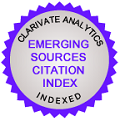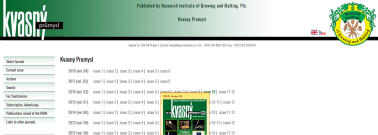Antimicrobial Nanomaterials in the Food Industry
DOI:
https://doi.org/10.18832/kp2015008Keywords:
food industry, metal nanoparticles, bacteria, toxicityAbstract
Nanoparticles of metals interacting with cellular components and biomacromolecules including DNA and RNA alter cellular processes. Concerning the antimicrobial activity, the metal nanoparticles in nanomolar concentrations inhibit the growth of bacterial strains. Even though the general mechanism of metal nanoparticle action has not been fully understood yet, among current accepted schemes belong the damage of the microbial enzymes by the release of metal ions, the membrane integrity changes, penetration into the cytoplasm of bacteria and accumulation in the periplasmic space or the reactive oxygen species formation due to the effect of metal nanoparticles. Moreover, G+ bacteria react remarkably later on the effect of metal nanoparticles compared to G- bacteria, which is reflected in the later inhibition of cell division. The aim of this study is to describe the properties of metal nanoparticles (silver, selenium, copper or zinc nanoparticles) and to compare their antimicrobial properties in complex with chitosan on the bacterial strains Staphylococcus aureus and Escherichia coli.







